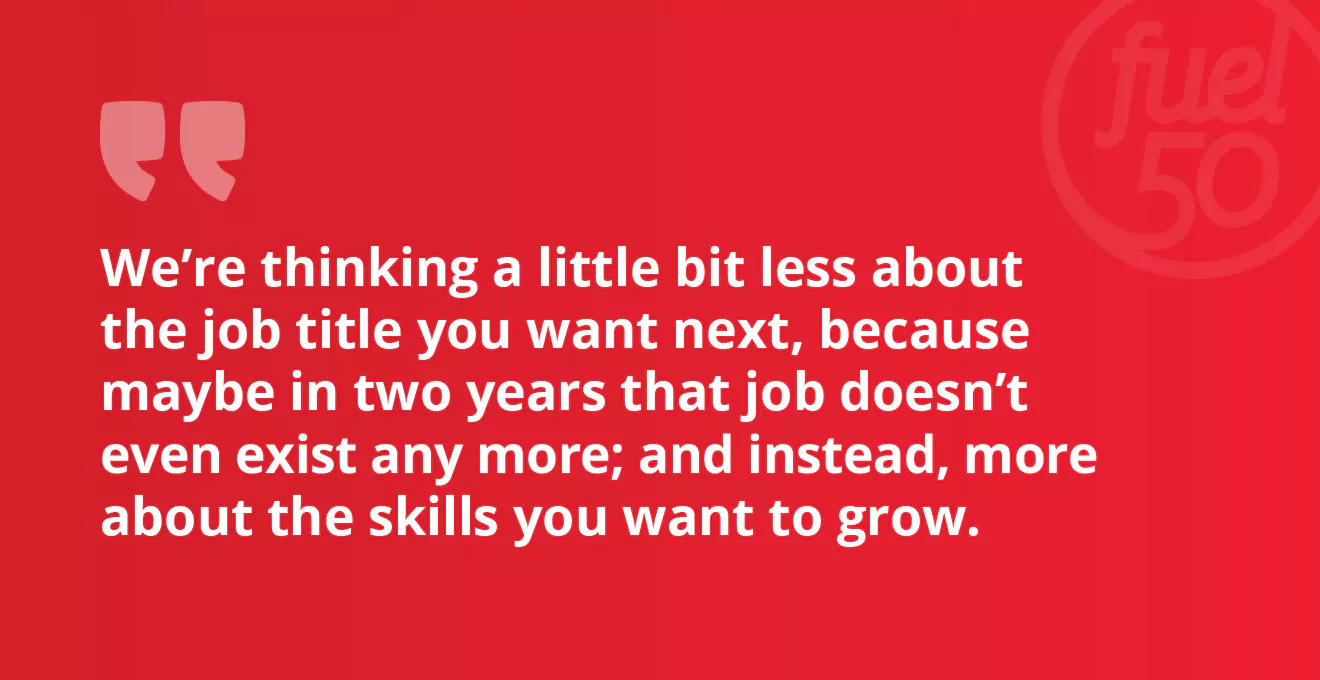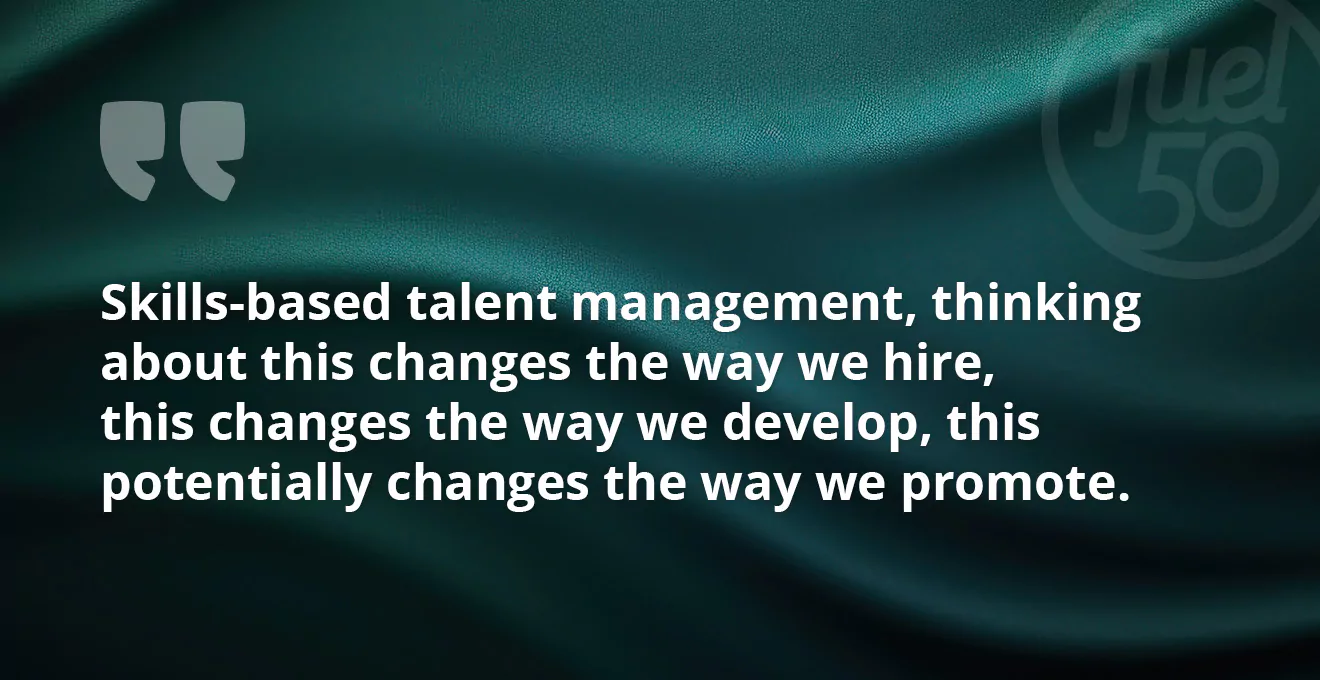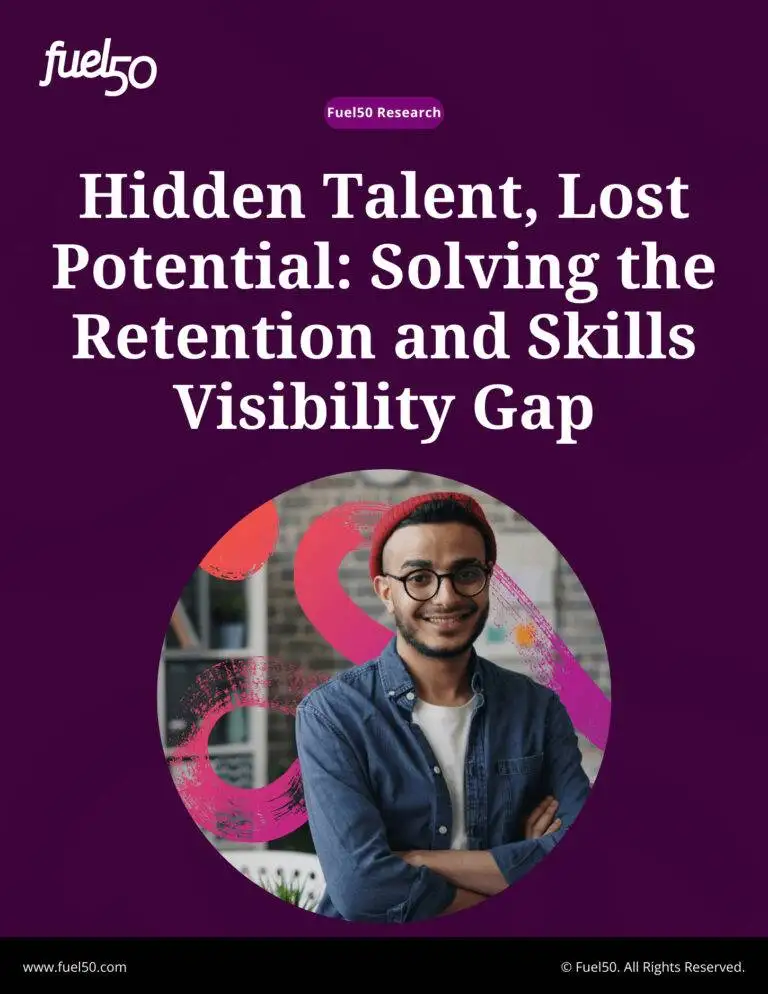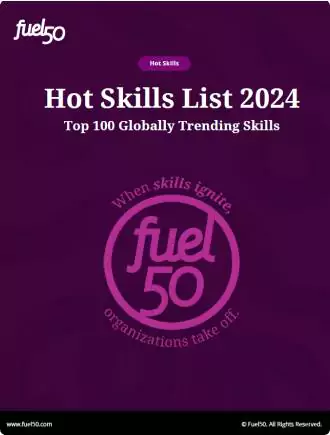Originally published 11 on my HR future, by David Green
In this episode of the Digital HR Leaders Podcast, David is joined by Christina Norris-Watts, Ph.D, Head of Assessment and People Practice, along with Doug Shagam, Head of People Data and Insights, from Johnson & Johnson.
Doug and Christina have been making waves in creating a skills-based approach to talent management at J&J, and today they are going to walk us through their journey, and share some of the practicalities that aided their success.
This conversation will cover:
-
The reasoning behind J&J’s transition towards a skills-based organisation
-
The different methods approached at the start of their journey
-
The details of their pilot, and what they learnt from that
-
How they are scaling the deployment of skills across the organisation
-
How they are getting buy-in from all stakeholders
-
The role of people analytics in building a skills-based organisation, and the skills HR need to obtain and develop to make this a success.
David Green: Welcome to the Digital HR Leaders. One of the big trends in the past few years has been the emergence of the skills-based organisation. We’ve seen several examples in previous episodes of the podcast, from companies such as HSBC, Unilever and Standard Chartered Bank, on how they are taking a skills-based approach to learning, internal mobility and workforce planning. But as there is no one-size-fits-all approach and to help guide you on your own unique journey, I have invited two special guests who are leading the charge in making skills a core part of the people strategy at Johnson & Johnson.
As such, I’m delighted to welcome Christina Norris-Watts, Head of Assessment and People Practices, along with Doug Shagam, Head of People Data and Insights, from J&J. In this episode, you’ll hear how they have been developing skills-based approaches to talent across the organisation, what projects and initiatives they have implemented in order to make it work, and guidance for HR practitioners on how to embark on a similar journey. So, stay tuned for a great conversation on the practicalities of skills-based talent management.
Hi, Doug, hi, Christina, really looking forward to our conversation, welcome to the show. Before we dive in, it would be great to give listeners a brief introduction to yourselves and your roles at Johnson & Johnson. So, Christina, I’ll start with you and then we’ll go to Doug.
Christina Norris-Watts: Hi, David, thanks for having us here today, it’s really wonderful to be here. So, I’m currently the Head of Assessment and People Practices with J&J, like you mentioned, and in this role I oversee our assessment strategy for both selection and development, as well as our skills strategy for the enterprise. And so, to be clear what that really means, I think about what good looks like and then how we measure people on those things.
I have a PhD in Industrial Organisation Psychology, I’ve spent about 20 years in the assessment and talent management space and really have the privilege of working with very smart people here at J&J, like Doug, to continue to innovate, experiment and advance in this area.
David Green: Christina, it’s great to see that you’re partnering with Doug, and Doug, you’re going to introduce yourself, but obviously we know each other well from our people analytics backgrounds.
Doug Shagam: We do. Thank you, David, and Christina, it’s always a privilege to be able to spend time with you talking to great people like David. My name is Doug Shagam, I’ve been with J&J for about five years, and I’m currently the Head of People Data and Insights at J&J. I’ve had the privilege, over the last five years, of actually having two roles, the one most currently and prior to this, I was the Head of Strategic Workforce Planning and Organisational Enablement.
Being able to have such roles, I’ve been able to see all parts of the people analytics function, being able to test and learn, do new things, try out new things, quite a bunch of course we’ll talk about today, but great partners like Christina and others within our global talent management and different parts of our business. I’ve been doing this for quite a while, over all my career, 20 years in analytics, specifically the last 10 in HR and besides that, I also have the privilege of being able to be an adjunct faculty member at three universities, all at master’s level, HCM or MBA level; it’s a really, really full experience to be able to do that.
David Green: Well, it’s fantastic to have you both on the show and I’ve had some insight into the work that you’ve been doing around skills at J&J, and I know it’s something that our listeners are going to be able to take a lot from. So, as you both know, there are a lot of conversations at the moment around the transformation towards a skills-based approach, it’s a hot topic. We’ve had a number of episodes on the show featuring that over the last year or 18 months. But I’m always quite curious to start off with, and I like to ask all the guests, particularly those that are representing organisations that are on this journey, to just understand a little bit more about what’s driving this change at your specific company. So, Christina, what prompted J&J as an organisation to start looking at talent through the lens of skills?
Christina Norris-Watts: It’s a great question, David, and to talk about what prompted us to start, we actually have to talk about where we wanted to go at the end and how we wanted it to end. So, we had two major goals: one was to democratise development for all employees at J&J, and what we mean by that is to ensure everyone at J&J knew how to grow their career, understood where the business was heading and understood the options available to them; and the second goal was to make sure we as an organisation understood the skills we have and the skills we still need to achieve our goals.
So, with those two things as an ending point, we then worked backwards to determine, how are we going to get all that information needed to inform and move closer to those goals? What are we going to do with that information? How are we going to make sure that we do that across the entire organisation, and an organisation as diverse as J&J that has so many different types of jobs and types of employees in so many different countries; how are we going to work backwards from that to get to where we want to go?
David Green: And, Doug, obviously with your workforce planning hat on, that sounds like a workforce planning 2.0?
Doug Shagam: Yeah, right. For so long, we’ve always been defined by the titles that we have, and we know the titles that we have are typically a collection of skills and experiences that we have. But is that all we are, just those collections of skills and experiences based on the current role that we have? For all the listeners out there, how many of you know that after I finished high school, my first year of my undergraduate experience was actually spent at a top-tier music school. Now, I’m not here to say that J&J’s going to be bringing me forward as the next musical conductor of the J&J band; however, that is a skill that I do possess and should the need arise for musicians for J&J’s Got Talent, now they have a potential source to go tap into.
What we think about is, we are not just a group of accountants, or group of people who are data engineers, or a group of people who have a job title. We are a collection of different skills, different experiences, and how can we leverage that and what people really want to do in their career, to grow, to adapt, to understand what do the organisational capabilities really want to be, and help them further their opportunities to grow within our company?
David Green: Let’s go back to the early stages of the skills transformation at J&J. Obviously, there’s no one size fits all when it comes to this, but I think it will be really useful for listeners to hear a little bit about how J&J approach this new way of looking at talent. What were the different methods that you took when you started out to answer those questions that Christina outlined, you know, understanding the skills that you’ve got and the gaps?
Doug Shagam: Yeah, absolutely. So, this really started as a true proof of concept, and what I mean by that is we know that there are lots of ways to measure skill. I don’t know, Christina could probably tell us when the whole notion of capturing skills and identifying when they actually started; I can’t even fathom the date, but it was probably a long, long time ago and there’s lots of ways to do it. But what we said was, “Is there are a way that it could be done at scale? Is there a way that we could do it that could be very robust in terms of ease of use? Could there be a way that could be done that would be different than what more conventional methods would be?”
So what we did was say, “Let’s take ten skills under a capability umbrella called analytics”. Now, this comprised of about seven more technical skills, and it was everything from what we would call business insights, do people understand that we have generated information from our business and people can understand a little of what that information may be; all the way to machine learning, statistical programming, machine learning. And they were skills (a) do I possess that; and then (b) what proficiency level do I have, everything from entry level, which is sort of like, “I watched a TED Talk on it for 20 minutes, maybe not even 20 minutes, but a short TED Talk”, all the way through, “I’m a thought leader, I’m somebody who’s out there speaking at conferences, I know what I’m doing”?
We took two different groups. One group was a group that was in the data science council, and another group of around 4,000, 5,000 folks that were randomly selected across the United States. We wanted to know (1) do we have data that’s good enough within our digital footprint, so information that was contained in our own HR systems, to say, “Wow, we actually could identify possession and proficiency of those skills we wanted to show our employees”; (2) based on some algorithm that’s been created, do they agree with the information? Do they trust us by showing that, you know what, this is the information I have, this is the information that a computer has generated, do I really believe these people when they tell me it’s only going to stuff between these two groups, it’s not going to any further? It turns out it worked out pretty well.
David Green: So, Doug, this is the kind of approach of inferring skills from data that you’ve got, rather than going out to employees and asking them what skills they’ve got, because that takes time for the employees to do it, it’s sometimes difficult to drive adoption; but instead, you went out to employees saying, “We’ve mined this data and this is our understanding of these skills. Can you please just validate that this is accurate?”
Doug Shagam: Yeah, that’s right, we asked employees to opt in first, and they did, and they participated and then they got back the results. We gave them opportunities later on to take a ride with us on an experimental skills journey; exactly right.
David Green: So, this was a pure pilot really to just see whether you actually had the data that was available, and you could get some form of accuracy and that accuracy was judged by those employees that opted in to validate the information that had been collected? You then moved to the next stage, so this was almost a pilot of a pilot, I’m guessing, from what you’re saying; you didn’t then just suddenly say, “Okay, now we’re going to deploy it all across J&J”; you thought, “Let’s do a deeper pilot”, and I think you started with your technology department first, I think I’m correct.
It would be helpful to ask, because I think again with something like this, the general recommendations and guidance that we get from both practitioners and other thought leaders, or even vendors in the field is, do start with a pilot, prove that concept. Why did you choose the technology department; it would be helpful to understand? And, what did you learn from it?
Doug Shagam: Yeah, absolutely. Well, if there’s one thing that I know that I’ve found to be successful on my career is, when you’ve got an engaged sponsor and you’ve got an engaged Head of HR for that sponsor, who really wants to move forward, a group of people that we know are willing to take risks and try things out, that’s sort of three green lights, if you will, to move forward. That’s really where things started to move quite a bit.
What I love about the technology organisation, just as Christina pointed out, they started with the end in mind. They said, “Before I just go willy-nilly and say, ‘I just want to assess every skill humanly possible’”, what they did was instead say, “I’m going to collect all of the information I have from strategic plans. We know we have what we call long-range financial plans, strategic plans, and they said, “All right, across our businesses, the different sectors that we have, the different functions that we have, what are the common capabilities and the skills underneath those capabilities that we as a function need to have, and they’re going to meet these goals based on the existing business, typically three, multiple years out? So, it’s not today, it’s a couple of years out from now”. “Well, if we need different capability sets to sell products, to deliver products, to do all these different things, then we have to plan”, and as you know with workforce planning, we can’t start to hire people two years after something is going to go live; we have to hire it two years before someone even starts to develop something. So, the beauty of this was understanding what those plans were and putting in place practices so that we had a strategy around buying it, building it, borrowing. But to do that, we had to know where people stood, and that’s where this was really educational for so many people within the organisation. It was not at all a promotion around, “Look, you know what, if you don’t do this, there’s going to be problems, this is not going to go well for you”. This was really about, “This is what we’re fighting for. We want you and only you to see, and it’s your choice on how you want to do things afterwards”.
Some really great results came from that, specifically one simple example. Over 2,000 people went from no skill detected in certain skills, to having evidence of at least entry level of more or the skills stack. No one was forced on their goals and objectives, nobody had to go do that, they did it voluntarily, and that was just in the very early stages of rolling this out within the technology organisation. I’m sure Christina, you’ve got stuff to add to that.

Christina Norris-Watts: Yeah, I agree with everything you said, Doug, and in addition it was such a friendly audience who really understood that this might not work, so that was key too. This is a lot of effort on their part, it’s a very cool way of measuring skills, it’s a very innovative — in my world, it would be called a passive assessment, rather than a self-report or a manager report, or even an objective test, it’s a passive assessment which I do think is going to be the way for the future in assessments and as the technology continues to advance.
But it’s so new that it really might not work and passive is a little bit of a misnomer, because it does take a lot of work on the part of the technology organisation. It takes a lot of work on the part of the person even being assessed, even though they’re being assessed passively, they still have to go in and look at this and agree or disagree, and then we use that information as well. So, it’s not that it’s no work on their part, and it’s definitely a lot of work on the part of the people managing the project.
So, to put all those resources into something that at the end of the day, we could have come back and been like, “Yeah, it didn’t work”, you need to have that expectation set up front, you need that partner with the right expectations who isn’t expecting magic, but instead is just as curious as you are to see what you can achieve if you try.
David Green: What were some of the lessons that you learnt from the pilot, Doug?
Doug Shagam: You know, I think there were a handful of things when I looked at this first. People want to know where they actually stand. When I think about my own personal life, I want to know how I’m doing, whether that’s in my financial goals, in my personal goals; at work, we want to know how we stand, and we want to know how we stand not just once a year or twice a year during a performance or mid-year assessment, but we want to know this is what we’re playing for, “How am I doing skills-wise against that?” I think that’s tremendously important and I think people crave that.
We learned that sometimes, good enough can be even better. We learned that that first algorithm that produced pretty good results, we learned and asked and asked questions and found that our data scientists realised, “We could tweak this a little bit, maybe if we just did things in a little bit of a different order, maybe feature-engineered a little bit, we could actually get better agreement and with less bias”, like anchor bias for example, if we didn’t necessarily show the algorithmic score of the people first, if we just gave people the opportunity to rate themselves on this one-to-five scale, they would do better. And it turns out that was true.
So, we did a little bit of testing and I think overall, we learned a tremendous amount about what was possible there. We also found a tremendous hunger expectedly from Human Resources leaders, but in my opinion even more so from business leaders, because business leaders, they run their business, they have to have the talent to run their business, but they want to be able to understand the different opportunities and talent access strategies that they could have, so that they could have really meaningful dialogues with their HR partners and with their own talent to develop that group.
Christina Norris-Watts: We also learned that not all skills are created equal, and this becomes really apparent when you try to measure them in this way. What I mean by that is you can’t start with the measurement, you actually have to start with defining the skills and defining that construct underneath the skill, meaning what is the definition of the skill; what are the proficiency levels of those skills; if you’re going to use them for decision-making, you’re also going to need to do validation to link them to jobs. That was not the point of this pilot, but that would also be the third thing.
For example, when you’re measuring project management versus statistical programming, J&J has some really specific training programmes that we train project managers up on that may not be well-known. And so, we have a specific one called FPX, and if the algorithm is trying to infer project management and they see FPX and they might not know that that’s project management, then your inferring of that might be wrong. Also, there’s other things that go into project management, like building relationships and influencing without authority, and other things that affect project management versus statistical programming. Well, there’s only one way to calculate chi-square, and chi-square at J&J are the same as chi-square anywhere else. So, that’s a little bit easier to use this kind of passive assessment to measure, it’s just a little bit more concrete.
That was also very interesting and we continue to explore, first the importance of defining the skills, but then secondly, there are just some skills yield themselves to some different measurement methods better than others, and that’s just the nature of the animal’s skills.
Doug Shagam: Christine is spot on. I’m guilty! First of all, I always loved algorithms, so I’m guilty of that, number one, and I always forget, “Oh yeah, you have to define these things”, and that’s not so simple. And you get to a point where you say, “You know what, am I going to keep building my own or am I going to go buy one?” That’s a whole separate topic on podcast, I’m sure. But I know project management’s something I’ve been doing virtually my entire career, have certifications in. I did abysmally in our pilot because I didn’t have the right J&J words to use, and that helped us to get better at defining that.
David Green:Turning to you, Christina, Doug mentioned that one of the reasons for choosing the technology department for the pilot was you had a real engaged Head of Business there, and you also had a really engaged Head of HR. So, I’d love to hear what they thought as the pilot ran through, but then linked to that, obviously the pilot was successful. How did that then help get buy-in from other business leaders and other members of the C-suite to actually start to deploy this approach at scale across the organisation?
Christina Norris-Watts: The pilot was successful, and let me be clear about why. The pilot was successful because we learned a lot, not because it was perfect measurement, and that was the expectation we had set up front, that’s what we were going for, and that’s what we had our leaders aligned to as well. So, after the pilot then, our leaders wanted to see even more data. They wanted to see, would this work with more skills; could our accuracy be better? And then back to the end plate, what could this be used for; what are we comfortable using this data for; what are we not comfortable using this data for?
So, we had all these questions that we wanted to keep asking, and so that led us down, “Okay, let’s try it with some different groups, different employees; let’s try it with some different skills and let’s see what happens there to see what more we can learn”. So, it really helped build the momentum to keep trying and keep experimenting, keep understanding where the limits of this were, because no measurement is perfect, some measurement is useful; so, where is it most useful and where is it going to be most effective for us to use? And, Doug, I’m sure you have additional things to add to that question as well.
Doug Shagam: I was going to say, we’re a large and diverse organisation in every way possible. We have people who are just as equally important on the manufacturing floor as they are in management roles. And being able to accurately assess people and the skills that they have, regardless of whether or not they regularly use computers and have good digital footprints or not is essential for the success of any measurement skills strategy.
One of the big takeaways that I walk away with when I think about the size and scale of J&J is simply put. There is not a magic silver bullet that will solve every single one of how we’re going to measure skills effectively at J&J. I think this is a great tool in our toolkit, but it’s not the only tool in our tool kit.
David Green: How are you going about that? Are you taking a similar route to when you first started, or no doubt obviously with the learnings that Christina’s talked about? And maybe, what are the some of the things that you’re using this for?
Doug Shagam: I probably use this joke a little too often, right, but there’s a very large social network that most people are familiar with, they go to when they look and they want to see what kind of education, what kind of jobs you’ve had, what kind of connections, and perhaps what skills you have. I mean, love her dearly, my mother’s a wonderful woman. She’s endorsed me for Python. Now, I think she thinks I’m working on the anti-venom in our pharmaceutical organisation! Now, I know Python does not have venom, I know that. Lovely lady, but she’s probably not going to be the most accurate representative source to define Python skills when endorsing people for it. I’m very happy to see though that she’s part of the community catching up on my career and things that are going on; that’s awesome.
But I think overall, we have to find different mechanisms, ideally ones that are, I’ll use the word “credentialled”, or Christina may have a much better terminology to use instead of that one, to accurately be able to portray what skills people do and don’t have, and ideally within a context, a framework that is within the J&J boundaries of, this is good, this is acceptable, because I know that again, there’s not one side that’s going to be perfect for everybody, I know that we all want to be able to grow in our career. At J&J, it’s incredibly important for us, it’s in our credo, it’s our North Star, it’s part of how we go about running our business on a daily basis. And the second paragraph is devoted strictly to our employees and there’s a sentence in there that speaks specifically to developing and advancing our talents, and this is part of that.
Knowing what skills people have is great but, David, as you’ve pointed out already, Christina highlighted too, this is the impetus to growing and developing that talent. We have a whole function that is specifically called J&J Learn to really do that in a big, big way. So, we really want to move this along the organisation, as well as make sure we have the best way to figure out how we can assess people’s skills.
Christina Norris-Watts: Yeah, and to answer that part of the question, David, about what we’re using it for, we’re very much starting with development, an individual’s own development. For us to be comfortable using it for any decision-making purposes, we want to make sure we’d have all the validation in place. And when I say validation, I mean the IO Psychology definition of validation, ensuring that the skills that we’re looking at are important for the job. If you’re talking about a hiring setting, you’ve got to make sure that they’re required at the time of hire; there are additional hurdles that need to be used for that. We are working through those now to make sure that we understand that, to make sure that we’re fair to all employees in how we use their data.
Starting with development is a little bit easier, because that allows the employee to be able to take control and align their own development to their skills. And like Doug said, we’ve talked about this is a really innovative, robust way of measuring skills. There are many, many other ways of measuring skills and there are many ways that organisations might want to measure skills, depending on the type of skills they’re measuring, or the employees involved. The way you measure skills signals something to the employee as well.
Your technology organisation typically is super-excited to do something innovative; your legal organisation may not be as excited. They may not be excited to be measured at all, just an example. So, you’ve got to think about how this will land with your employees, what will they gravitate towards; what kind of concerns will they have about how you’re doing it and what you are doing with the data. So, all of those things come into play because at the end of the day, yes we’re measuring skills; skills are just a small piece of being a human being, and we tend to get talked about a lot in this world but at the end of the day, we are not just a collection of skills. At J&J, we are a collection of people.
It also says in our credo, paragraph two, that we need to treat everybody as an individual, so we do need to think about their experiences, what they have done, their skills, what they can do now and their aspirations, what they want to do. All of those things are just as important; you measure them differently. This is a very innovative way to measuring skills, but we don’t want to reduce people just to a collection of their skills, because that would really do a disservice to everyone who works here.

David Green: Yeah, I couldn’t agree more, and I think that’s where the dynamic here with the fact that there are two of you on this episode is Doug covering very much from the workforce planning and the people analytics side; you, Christina, coming from that psychology background and obviously being responsible for assessment and people practices at the organisation. It’s a really interesting dynamic which I think we’re going to explore over the next two questions. So, Doug, we’ll start with people analytics. What role has the people analytics function at J&J played in driving this initiative forward?
Doug Shagam: This has been tremendously fun for us, I’ll put it that way as the starting point. First, it validated further how bringing together all of our human capital data in one place was really a smart decision early on. If I had to say mission accomplished on just one item, that would be one of them. The second, when I think about being able to demonstrate, are there alternative ways to identify what skills people have in a, I’m going to use the word “accurate”; I know, Christina, there may be a better word for accurate, but in a thoroughly accurate way to quickly assess what people skills are with a high degree, and I see accurate, because of their agreements to those skills, with very little even intervention, and be able to provide an aggregate view with again that trust and transparency to that employee that we’ll share some information, not the first round but over time, with their managers, again an aggregate view, so they can get that sense of, where do we need to deep dive and to understand what kind of opportunities there are for upskilling or reskilling, or for different strategies.
I think it also enabled us, as a people analytics function, to really start digging deep into, we know there are going to be different talent access strategies that will be needed. We also know that if this makes it in the technology organisation, it’s got to exist in other parts of the organisation, so let’s look at R&D, for example, let’s look in some other places where we’re probably going to see some overlaps. And we know that there are different areas, but those two is just one example.
The other piece I’d add is, it really put a new lens on things like the inflow and outflow of skills, especially skills where we know we have talent scarce, because if all we’re doing is bringing in talent, and it’s hard to bring in certain talent, and they’re leaving, that’s a real challenge and we want to know about that and we want to know what are the driving factors for what makes that talent more likely or less likely to leave. So, being able to put that into some practice was a huge win for us.
David Green: You both emphasise that the employees were very much at the centre of thinking around doing this work, and you talked about how this information can help employees with their development in terms of acquiring or improving certain skillsets within the organisation. How are you getting your employees on board, because I guess at the end of the day, you can set this up but if no one uses it, then all that effort’s gone to waste?
Christina Norris-Watts: Yeah, it’s a great question. We’re trying as much as possible to show them the value that they get out of it, and again we started with development, so the value they get out of it for their own development. Our development framework has three prongs: education, experience and exposure. So, it’s not just the LinkedIn learning course you can find based on the skill you’re looking to achieve; that can be fine, any course could be helpful, but what mentors can you find around the organisation; how can you get exposure to people who might have the skill; or how can you serve as a mentor to grow out in yourself? How can you find gigs around the organisation; so, how can you get a little bit more experience? How can you do stretch assignments in this particular skill area?
So, we’re really trying to set up skills-based talent management across the organisation, which is a pretty big shift for the organisation for folks to see, “Hey, if I can be really specific and concrete in my development goals because I understand where the business wants to go, then I can prioritise my own energy a little bit better and I can go in the right direction to get me where I want to go”. So, our hope is we’re thinking a little bit less about the job title you want next because maybe in two years, that job doesn’t even exist any more; and instead, more about the skills you want to grow, because you’ve been told accurately where the business is going, and you can work on developing that.
The more and more we can show that value to folks across the organisation, who have different businesses, have different business schools, but really get them to understand what’s needed and them allow them to easily — there’s a keyword there — easily understand how to better grow those skills, because it’s not that growing their skills is easy, but maybe we could make their resources to grow those skills a little bit easier to access.
David Green: It’s interesting actually, Christina, you’ve set up the next question very well, so you mention skills-based talent management, so we’re thinking about this changes the way we hire, this changes the way we develop, this potentially changes the way we promote, even in some organisations they’re even looking at skills-based compensation, for example, as well, so it’s a big shift for us as HR professionals. What are the new skills that HR professionals need to learn, and what are you doing at J&J to support this?
Christina Norris-Watts: I don’t know if I’d define them as new skills, but we have identified two priority skill areas for HR for this year and I really have to send the kudos to our HR development team who really drove this. But we’re focusing on what we’re calling Digital Champion and Analytic Acumen. And we’re saying, “For this year, these are our two priority areas”. Now, underneath there, there are going to be individual skills, and those individual skills may depend on what role you’re in and what you want to get to, so that you can decide, based on the experiences you have, where you want to go.
For example, all through grad school, I taught statistics. I love statistics, Doug can tell you, we very much like to geek out about statistics. So, if I’m thinking about improving my analytic acumen, I’m probably not going to increase the statistical part, I’m where I need to be to evaluate where I need to evaluate, and maybe I’m going to focus a little bit more on digital and digital savvy and some things that I might be missing in digital versus new total rewards analyst may find another different part of digital, or may take analytic acumen that they learned not in the HR space and I want to really understand HR-based analytics and upskill in that area.
These two things we think are going to be critical for anyone in HR, whether you’re in compensation, whether you’re in wellbeing, whether you’re in talent management, whether you’re in BU HR, they’re going to be critical moving forward, that you have some of analytic acumen and you understand all these digital, for lack of a better term, disruptions that continue to happen in the HR space so that you can evaluate and really think critically about them. And I was just thrilled that the HR development team was able to get our HR executive committee to agree on this because in the past, we may not have prioritised quite as well, and I won’t get into the research on burnout here, but if you try to do 24 things, you’re not necessarily going to do 24 things effectively. So, by getting it down to one or two, you can really help people focus, at least for this year. We’re not saying forever, but at least for this year, this is what we encourage people to focus on.
David Green: What do you think, and both will obviously have the opportunity to respond to this, what do you think HR leaders need to be thinking about most in the next 12 to 24 months; and in relation to that, what’s your biggest concern, and what do you see as the biggest opportunity?
Doug Shagam: So, I think from an opportunity standpoint, we have tremendous room to rethink employee experiences and candidate experiences, and I’ll double-click specifically into candidate experiences, because we’ve spent a long time, not that we should avoid it going forward, but focusing on retention, turnover, what are all these things that we can do. I think now, we have a really great time to rethink what we need to focus on for talent acquisition, because lots of systems, lots of technology, lots of stuff out there around that, I’ll call it that space, I think it’s high time to really get really good at that and make sure that experience of our candidates, experience of our employees, is really solid, really good, because otherwise it just leads to really poor outcomes.
The concern I have is one that simply put, we know today that employee trust and transparency are paramount. We have lots and lots of data and if we don’t continue to demonstrate further that protecting people’s information, using it in good ways, not negative ways but in good ways, that’s going to hurt everyone and the entire function that I’m a part of, Christine is a part of, that HR serves to do; so making sure that we really continue to raise that bar around ethics, raise that bar around trust and data and how we use employees’ information is paramount.
David Green: Yeah, excellent, Doug. And, Christina?
Christina Norris-Watts: I think the opportunity I see is also my biggest concern area, and that’s AI. So, artificial intelligence continues to grow in the HR space, and in some cases that’s phenomenal because we’re advancing and we’re innovating, and in some cases it has real, unintended consequences that we didn’t know it was going to have. So, you see folks on all sides of this continuum of, “AI will reinvent HR”, and then the other side of, “It’s too dangerous, it’s too misunderstood, we shouldn’t use it at all”, which I also don’t think is right.
So, it’s important to understand where AI can help HR, how AI works. Talk about digital champion; HR needs to understand AI, HR needs to not be, “This is a black box so I’m just going to, on the surface level, understand it”. No, we need to understand it, we need to be intellectually curious and get underneath it and understand what’s working. And if that means you need to do more maths and statistics than you thought you’d be doing in HR, then that’s just where HR is going, and please do more maths and statistics to understand AI.
We have new regulation popping up, we have the New York City regulation that’s going to hit in mid-April that was delayed as of December, and how is that going to affect companies? There’s going to be more state legislation, and by the way, there’s already different country legislation outside of the United States that everyone should be aware of that is involved globally. So, I don’t see this stopping any time soon, I do think this is going to continue to grow and it’s so important for HR leaders to take a really thoughtful and nuanced approach to it, and not just say that it’s all great or that it’s all terrible, because that’s never the case; it’s somewhere in the middle.
David Green: That’s a really important point, Christina, and a really good place I think to end the episode. I think that will let people ponder as they listen to this. So, Doug, Christina, thank you so much for being guests on the Digital HR Leaders podcast, it’s been wonderful to hear about the work that you’re doing at J&J. Can you let listeners know how they can find you on social media, if you do social media, and find out more about your work at J&J?
Doug Shagam: I would encourage if you want to learn more, certainly about me, please follow me on LinkedIn, and it’s a great place to connect and to be followed.
Christina Norris-Watts: Yeah, absolutely, you can follow me on LinkedIn, Christina Norris-Watts. If you want to learn more about J&J, you can always go to the J&J website. If you thought this was a really fun place to work and you’d like to work for us, I’m going to do a little plug for jobs.j&j.com; it’s a nice website to check out every once in a while.
David Green: There we are, perfect way to end it. Doug, Christina, thank you very much.
Doug Shagam: Thank you, David.
Christina Norris-Watts: Thank you so much, David.











